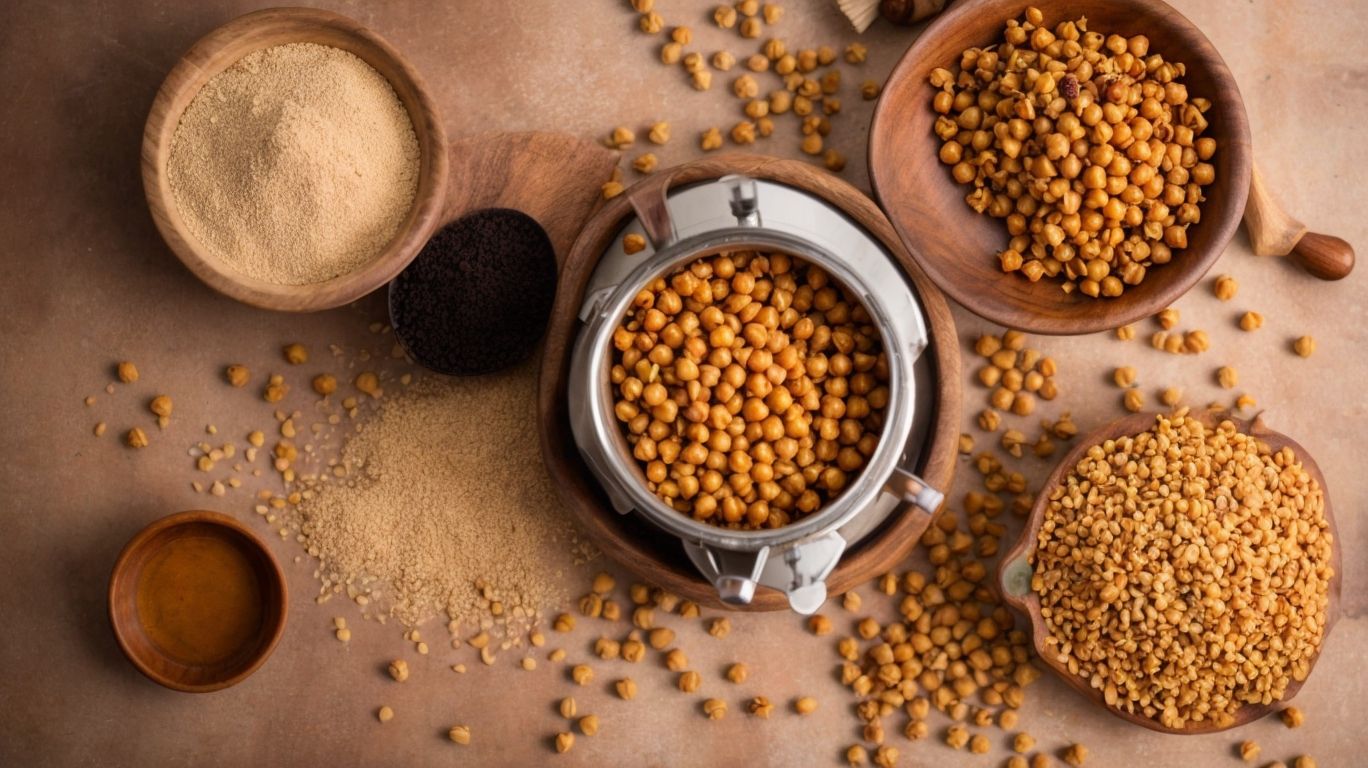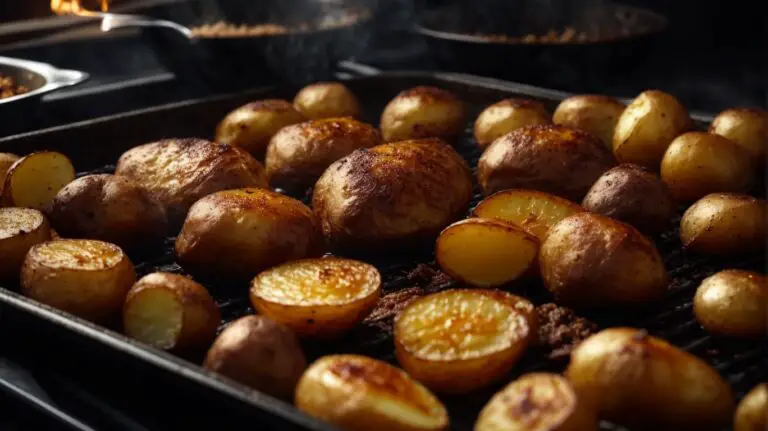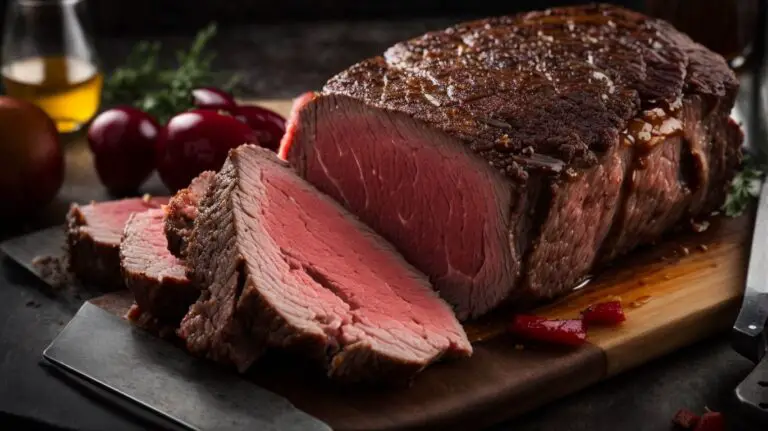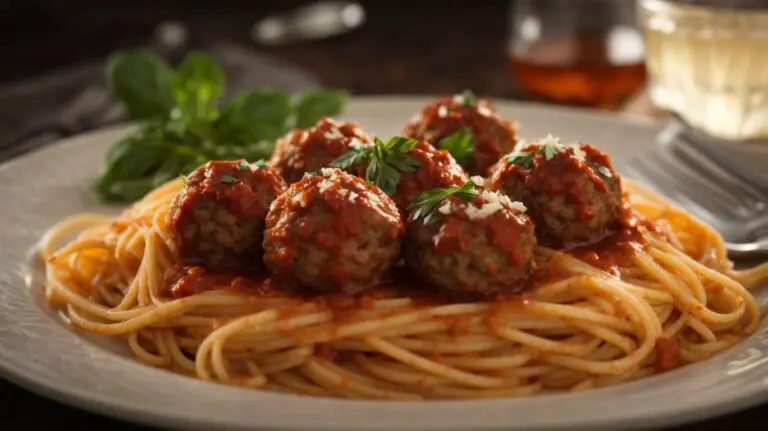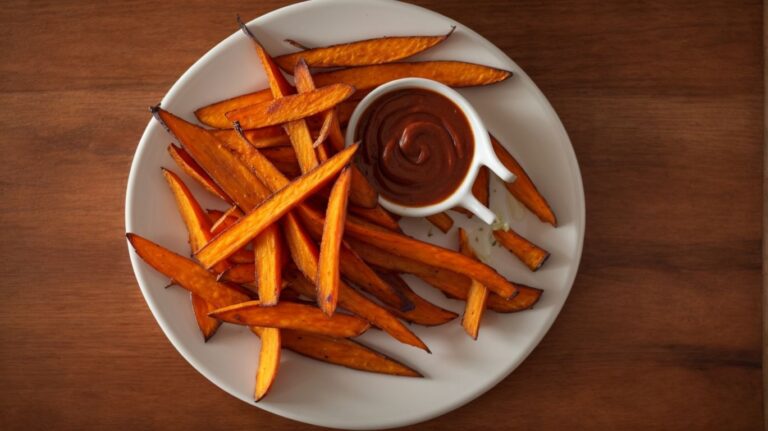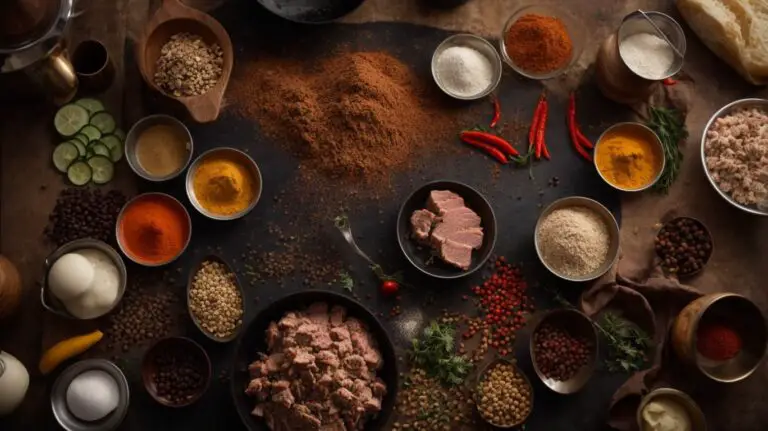How to Cook Chickpeas Without Soaking?
If you’re a fan of chickpeas but don’t have the time or patience to soak them before cooking, you’re in luck!
In this article, we will explore the methods for cooking chickpeas without soaking, including the stovetop, Instant Pot, and slow cooker methods.
We’ll also provide you with tips on how to achieve perfectly cooked chickpeas every time.
And if you’re wondering what delicious dishes you can make with cooked chickpeas, we’ve got you covered with recipes for hummus, falafel, chickpea curry, and roasted chickpeas.
So, let’s get cooking without soaking and enjoy the versatile and nutritious chickpeas in a variety of dishes!
Key Takeaways:
What Are Chickpeas?
Chickpeas, also known as garbanzo beans, are a versatile legume widely used in various cuisines around the world.
Originating in the Middle East over 7,000 years ago, chickpeas have a rich history deeply intertwined with Mediterranean and Middle Eastern cooking traditions. These legumes are not just known for their delicious taste, but also for their nutritional value – packed with plant-based protein, fiber, vitamins, and minerals. They are a staple in vegetarian and vegan diets, providing essential nutrients without the need for animal products.
Chickpeas are a key ingredient in iconic dishes like hummus, falafel, and chana masala, each reflecting the unique culinary heritage of their respective regions. Their versatility allows them to be used in soups, salads, stews, curries, and even desserts.
Why Should You Cook Chickpeas Without Soaking?
Cooking chickpeas without soaking can save time and preserve the beans’ natural flavors and textures.
When chickpeas are cooked without soaking, they retain more of their nutty and earthy taste, enhancing the overall flavor profile of your dish. The texture of the chickpeas also tends to be firmer and holds up better in salads, stews, and curries.
- Studies have shown that cooking chickpeas without pre-soaking can reduce the cooking time significantly, making it a convenient option for busy cooks.
- Experts suggest that for certain recipes, like hummus or crispy roasted chickpeas, this method results in a creamier texture and superior crunchiness.
Methods for Cooking Chickpeas Without Soaking
In terms of cooking chickpeas without soaking, there are various methods to choose from, each offering unique advantages and results.
Stovetop Method
The stovetop method for cooking chickpeas without soaking involves simmering the beans in water until they are tender, ensuring to manage gas formation and foam during the cooking process.
When cooking chickpeas on the stovetop, it is essential to maintain control over the heat source to ensure even cooking and prevent burning. Start by rinsing the chickpeas thoroughly to remove any debris or dirt.
- Measure the water carefully, using a ratio of around 3 cups of water for every 1 cup of chickpeas. This ensures that the chickpeas have enough water to cook and soften properly.
- Place the chickpeas in a large pot with the measured water and bring it to a boil. Once boiling, reduce the heat to a gentle simmer and cover the pot with a lid. Allow the chickpeas to cook for about 45-60 minutes, depending on your preferred level of tenderness.
- Throughout the cooking process, keep an eye on the pot to adjust the heat as needed to maintain a steady simmer. Skim off any foam that forms on the surface of the water to prevent boil-overs and ensure a clear broth.
Instant Pot Method
Using an Instant Pot is a convenient and efficient way to cook chickpeas without soaking, leveraging the pressure cooker function for faster results.
When cooking chickpeas in an Instant Pot without soaking, you not only save time but also preserve more nutrients compared to traditional cooking methods. The high pressure created inside the Instant Pot allows the chickpeas to cook quickly and evenly, resulting in tender beans in a fraction of the time.
Pressure cooking also helps retain the natural flavors of the chickpeas, making them ideal for a variety of dishes like hummus, salads, stews, and curries.
Slow Cooker Method
The slow cooker method offers a hands-off approach to cooking chickpeas without soaking, allowing for gradual simmering over an extended period to achieve tender beans.
This method not only saves time but also enhances the flavor profile of the chickpeas. To start, rinse dried chickpeas thoroughly and place them in the slow cooker. Season with salt, pepper, and any desired herbs or spices to infuse the beans with delicious flavors. Add enough water or broth to cover the chickpeas completely, ensuring they have room to expand during cooking.
Throughout the cooking process, periodically check the chickpeas for tenderness. You may need to adjust the liquid level to prevent them from drying out or becoming too mushy. By simmering slowly, the chickpeas develop a creamy texture and a rich, nutty taste that surpasses quick-cooking methods.
Tips for Cooking Perfect Chickpeas Without Soaking
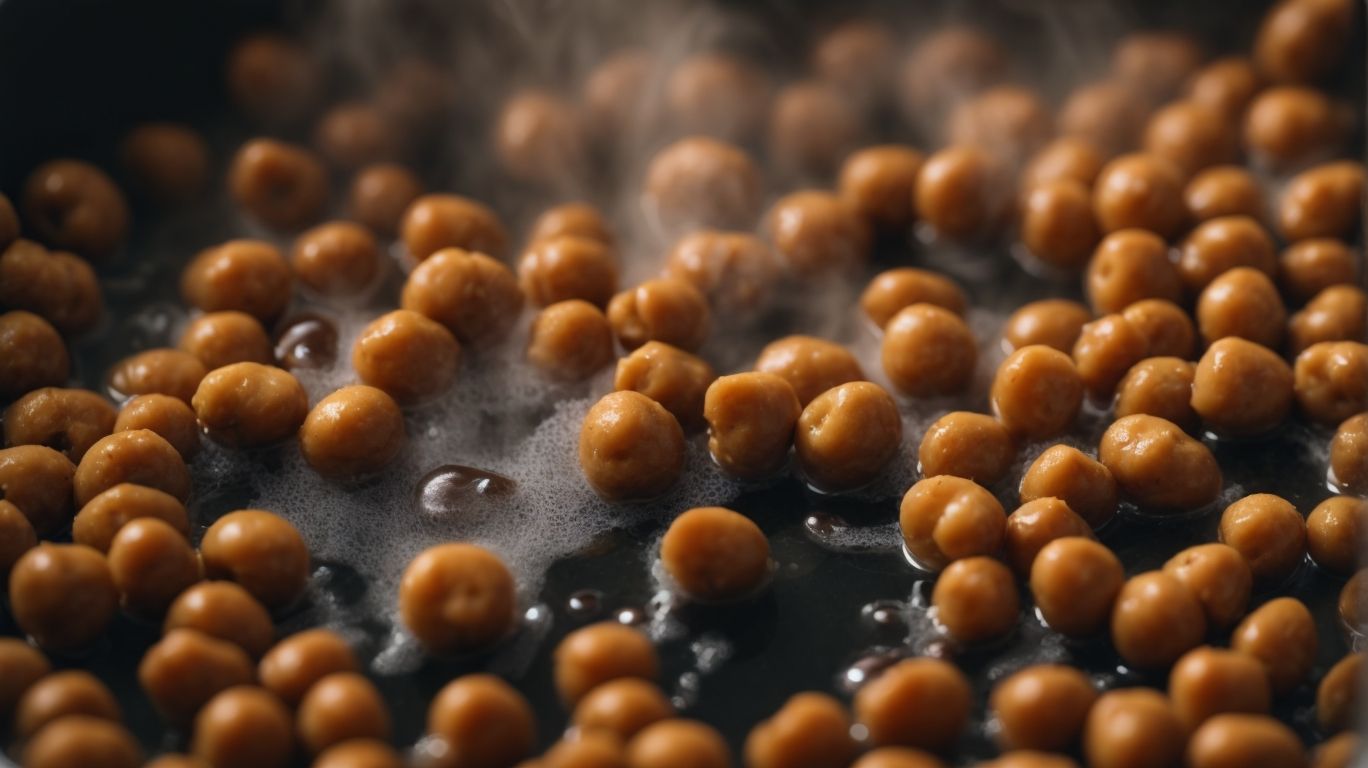
Credits: Poormet.Com – Joseph Moore
Achieving perfectly cooked chickpeas without soaking requires attention to detail, including factors like texture, flavor, and tenderness.
Use Fresh Chickpeas
Selecting fresh chickpeas is essential for cooking without soaking, as they require less time to reach ideal tenderness compared to older beans.
In terms of choosing the best chickpeas, look for ones that are firm, plump, and have a smooth surface without wrinkles or cracks. Freshness can significantly impact the cooking process, ensuring a creamy texture and robust flavor in your dishes.
Proper storage is crucial to maintain the quality of chickpeas. Store them in an airtight container in a cool, dry place, away from direct sunlight and moisture. This will help prevent them from drying out or absorbing excess moisture, which can lead to spoilage.
Keep an eye out for any signs of spoilage, such as a musty odor, discoloration, or mold growth. If you notice any of these indicators, it’s best to discard the chickpeas to avoid any negative impact on your culinary creations.
Rinse and Drain the Chickpeas
Rinsing and draining chickpeas before cooking helps remove excess starch and debris, promoting better cooking results and overall flavor.
Properly rinsing and draining chickpeas is a crucial step that can significantly enhance the texture and taste of your dishes. Begin by placing the chickpeas in a colander under cold running water. Allow the water to flow through the chickpeas, stirring them gently to help loosen any impurities. Continue this process until the water runs clear, ensuring that all excess starch is washed away.
Draining the chickpeas is equally essential. After rinsing, let them sit in the colander for a few minutes to drain any excess water completely. This helps prevent the chickpeas from becoming soggy during cooking and ensures they retain their desired texture.
Add a Pinch of Baking Soda
Including a small amount of baking soda while cooking chickpeas can help improve their texture and tenderness, enhancing the overall flavor profile of the beans.
Baking soda, when added to the chickpeas’ cooking water, helps break down the tough cellulose structure of the beans, resulting in a creamier consistency and shorter cooking time.
It’s crucial to use just a pinch of baking soda, as excess can lead to a soapy taste in the final dish. Stirring the chickpeas occasionally during cooking ensures even distribution of the baking soda for consistent results.
When using baking soda, keep in mind that it can alter the chickpeas’ pH level, impacting the overall taste. The addition of baking soda can bring out earthy and nutty undertones, creating a richer flavor profile.
Cook With Flavorful Ingredients
Enhancing chickpeas with flavorful ingredients like herbs, spices, and aromatics can elevate the taste profile of the dish and create a more enticing culinary experience.
Herbs like parsley, cilantro, or mint can bring a refreshing pop of green to the chickpeas, while spices such as cumin, paprika, or turmeric add depth and warmth to the flavor profile. Aromatics like garlic, onions, or ginger can infuse the dish with savory richness and complexity.
Experimentation with different combinations of these ingredients can lead to exciting variations, such as a zesty Mediterranean-inspired chickpea salad with lemon, oregano, and olives or a fragrant Indian-style chickpea curry with cinnamon, cloves, and cardamom.
What Can You Make With Cooked Chickpeas?
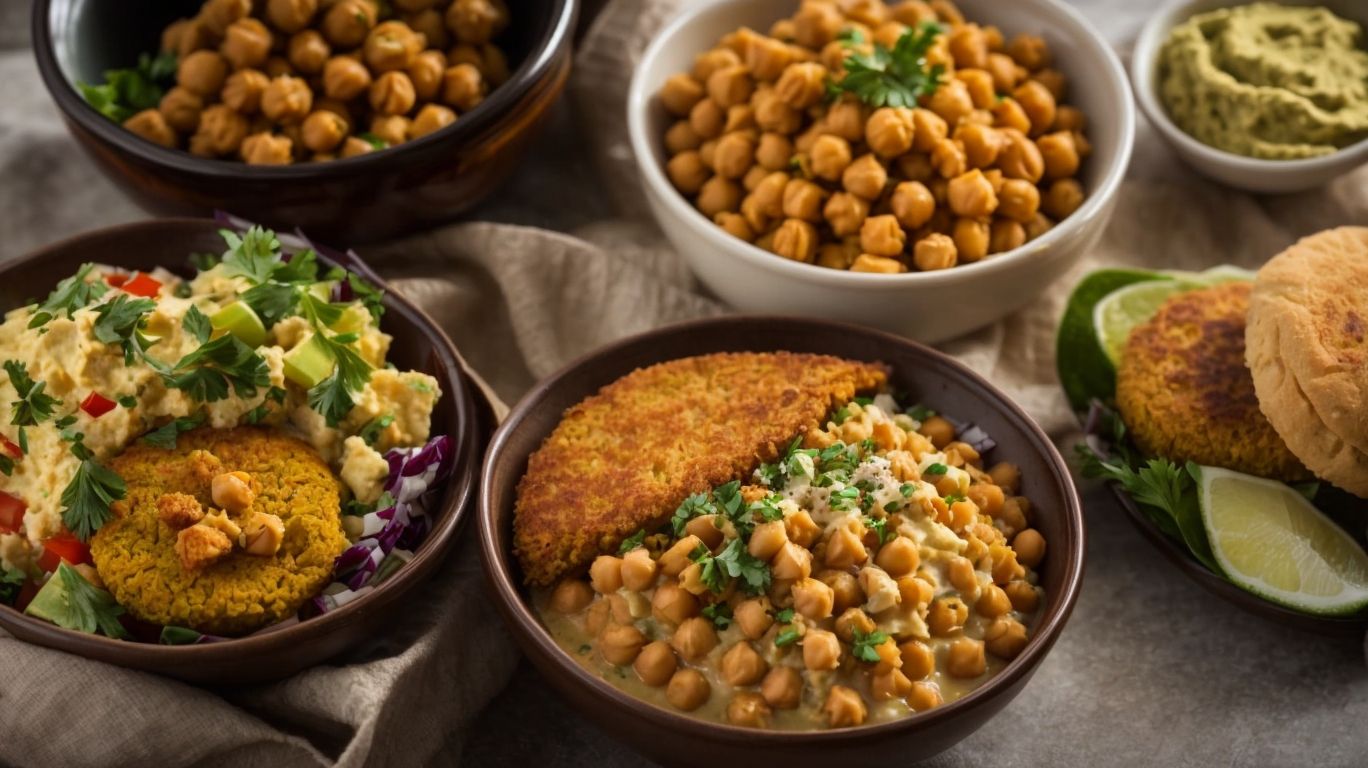
Credits: Poormet.Com – Benjamin Lee
Cooked chickpeas serve as a versatile ingredient that can be used to create a wide range of dishes, including classic recipes like hummus, falafel, chickpea curry, and roasted chickpeas.
Hummus
Hummus, a creamy dip made from blended chickpeas, tahini, and flavorful seasonings, is a beloved Middle Eastern dish that pairs well with pita bread and fresh vegetables.
Originating in the Middle East, hummus has become a staple in many households worldwide due to its smooth texture and versatile flavor profile. To craft this delectable dish, start by cooking chickpeas until they are soft and easy to blend. Combine the chickpeas with tahini, garlic, lemon juice, and a dash of olive oil in a food processor until smooth.
Depending on personal preference, variations of hummus recipes can include ingredients like roasted red peppers, roasted garlic, or even cumin for a unique twist. Once prepared, garnish the hummus with a drizzle of olive oil, a sprinkle of paprika, and a handful of fresh herbs like parsley or mint.
Falafel
Falafel, crispy fried balls made from ground chickpeas and aromatic herbs, are a popular street food in many Middle Eastern and Mediterranean cuisines, often served in pita sandwiches or salads.
If you are planning to make your own falafel at home, the key ingredient is cooked chickpeas, either canned or soaked and boiled chickpeas. The chickpeas are mixed with a flavorful blend of fresh parsley, cilantro, and spices like cumin and coriander, creating a fragrant and delicious mixture. Once the mixture is well combined, it is shaped into small round balls or patties and deep-fried until golden and crispy.
Falafel has its roots in ancient Egypt and is believed to have been eaten since Pharaonic times. Over the years, this beloved dish has spread across the Middle East, with each region putting its own twist on the recipe. For example, in Egypt, falafel is commonly made with fava beans, while in Lebanon, the traditional version uses only chickpeas.
When serving falafel, the options are endless. Besides the classic pita sandwich or salad, you can also enjoy falafel as a topping for bowls, wraps, or even as an appetizer with tahini sauce for dipping. Get creative with your falafel spread and experiment with different toppings and accompaniments to delight your taste buds.
Chickpea Curry
Chickpea curry, a flavorful and aromatic dish featuring tender chickpeas simmered in a rich blend of spices, tomatoes, and coconut milk, is a staple in Indian and South Asian cuisines.
The versatility of chickpea curry lies in its ability to be customized to suit various preferences and dietary requirements. Whether you prefer it spicy or mild, with extra vegetables, or a hint of sweetness, this dish can easily adapt to your taste. Commonly paired with fluffy basmati rice or warm naan bread, chickpea curry offers a delightful balance of flavors and textures.
Roasted Chickpeas
Roasted chickpeas, seasoned and baked to crispy perfection, make a delightful and nutritious snack option that can be enjoyed on its own or added to salads and trail mixes.
They are not only a tasty treat but also packed with protein and fiber, making them a healthier alternative to traditional snacks. To make your own batch, start with cooked chickpeas and pat them dry with a kitchen towel to remove excess moisture.
- Choose your favorite seasoning blends like smoked paprika, garlic powder, cumin, or even a touch of honey for a sweet twist.
- Spread the seasoned chickpeas in a single layer on a baking sheet and roast them in a preheated oven at 400°F for about 30-40 minutes, shaking the pan halfway through to ensure even cooking.
- Make sure you let them cool completely before storing in an airtight container to maintain their crunchiness over time. If they lose their crispness, you can always pop them back in the oven for a few minutes to revive their texture.
Conclusion

Credits: Poormet.Com – Bradley Green
Chickpeas, also known as garbanzo beans, offer a nutritious and versatile ingredient that can be prepared in various ways without the need for soaking, yielding delicious results and culinary inspiration.
One of the most notable advantages of cooking chickpeas without soaking is preserving their nutritional value. By avoiding pre-soaking, you retain more of the fiber, protein, and essential vitamins present in chickpeas.
This method opens up a world of culinary possibilities. The chickpeas can be roasted for a crispy snack, blended into creamy hummus, or added to soups and stews for a hearty texture.
The liquid leftover from cooking chickpeas, known as aquafaba, is a wonder ingredient in vegan cooking. Aquafaba can be whipped into meringues, used as a substitute for egg whites, or incorporated into various desserts for a fluffy texture.
To truly appreciate the versatility of chickpeas, it’s essential to experiment with different recipes and techniques. Whether you’re a fan of savory dishes or have a sweet tooth, chickpeas can surprise you with their adaptability and rich flavor profile.
Frequently Asked Questions
1. How to Cook Chickpeas Without Soaking?
While soaking chickpeas is often recommended for easier digestion, there are ways to cook them without soaking. Here’s how.
2. Can I cook chickpeas without soaking them first?
Yes, you can cook chickpeas without soaking them first. However, soaking can reduce cooking time and make them easier to digest.
3. What is the best way to cook chickpeas without soaking?
The best way to cook chickpeas without soaking is to use a pressure cooker or slow cooker. These methods will cook the chickpeas thoroughly and soften them without soaking.
4. How long does it take to cook chickpeas without soaking?
Cooking chickpeas without soaking can take anywhere from 1-2 hours depending on the cooking method used. Pressure cookers and slow cookers will reduce the cooking time.
5. Are there any tips for cooking chickpeas without soaking?
Yes, make sure to rinse the chickpeas thoroughly before cooking and use enough water to cover the chickpeas. Adding baking soda to the water can also help soften the chickpeas without soaking.
6. Can I freeze chickpeas without soaking?
Yes, you can freeze chickpeas without soaking. Cook the chickpeas first, let them cool, and then store them in an airtight container or freezer bag. They will keep for up to 3 months in the freezer.

